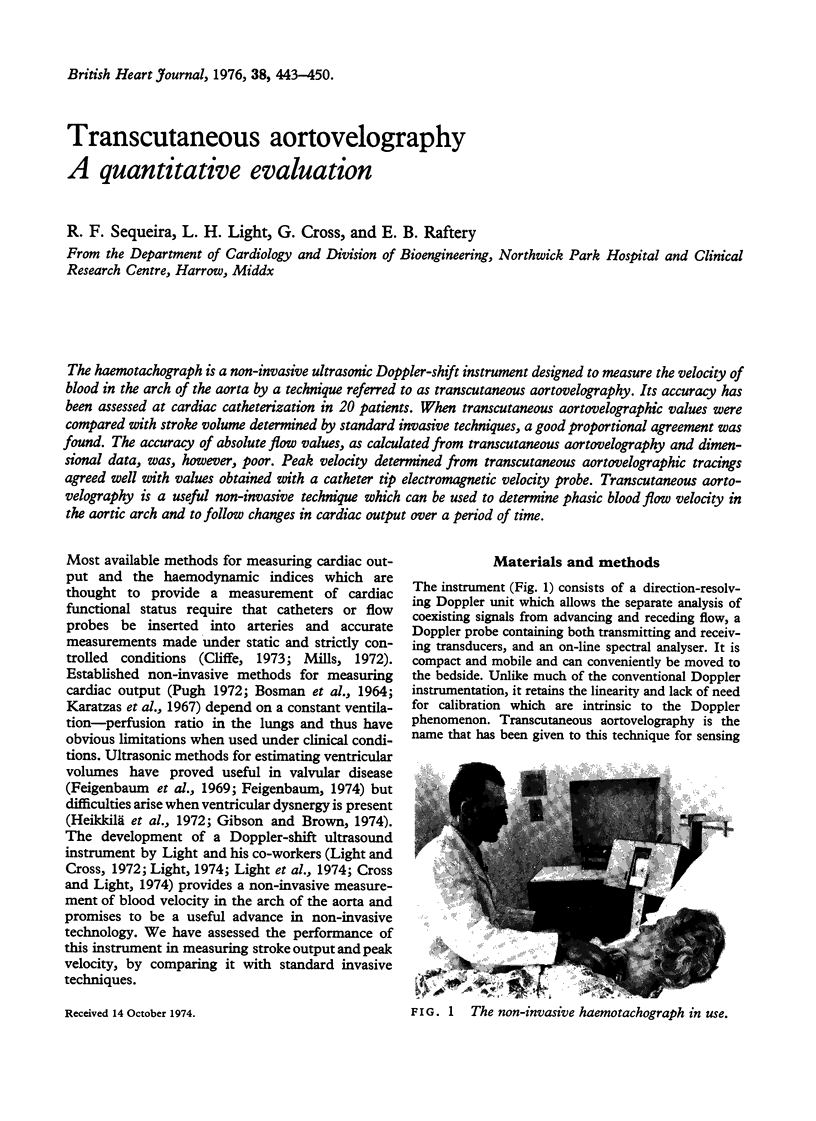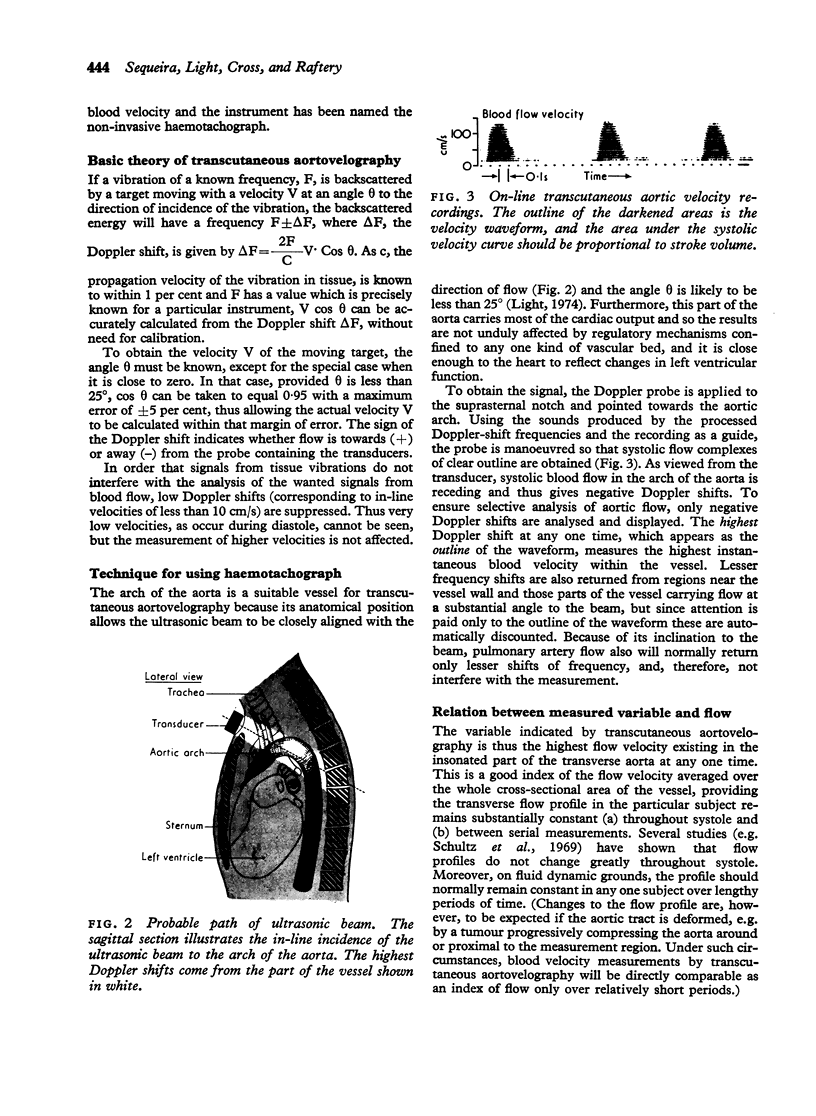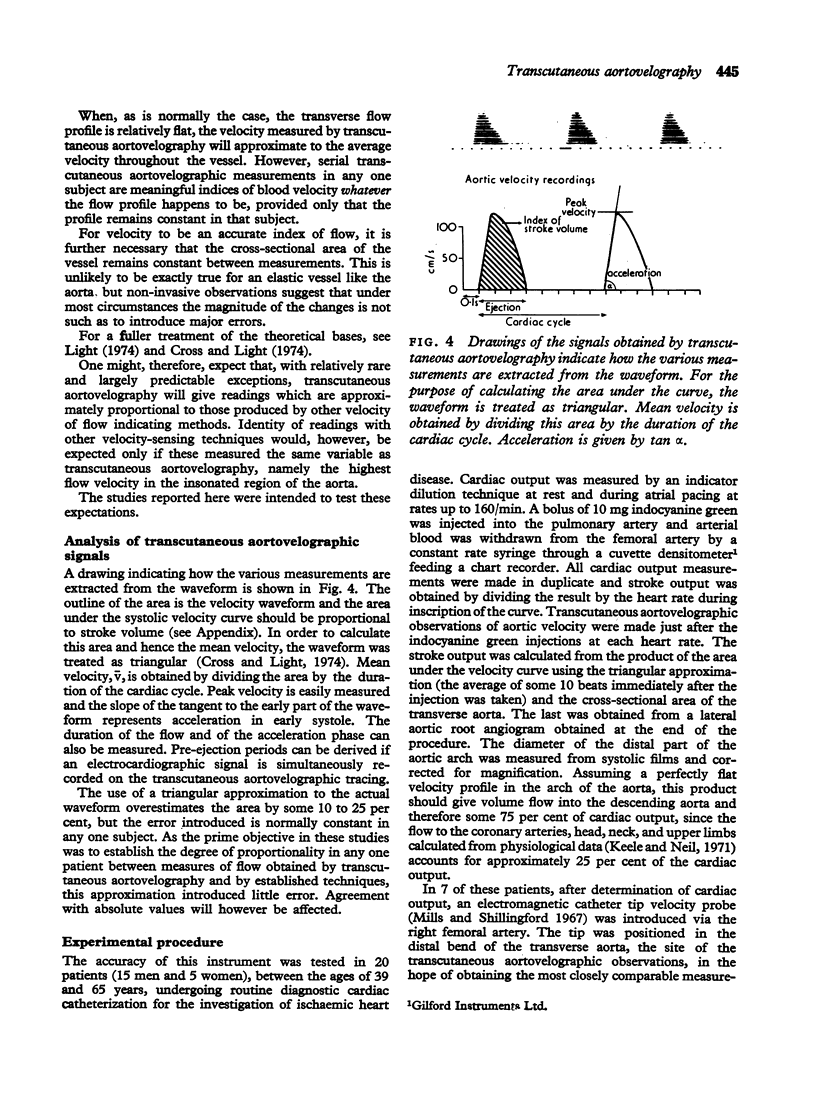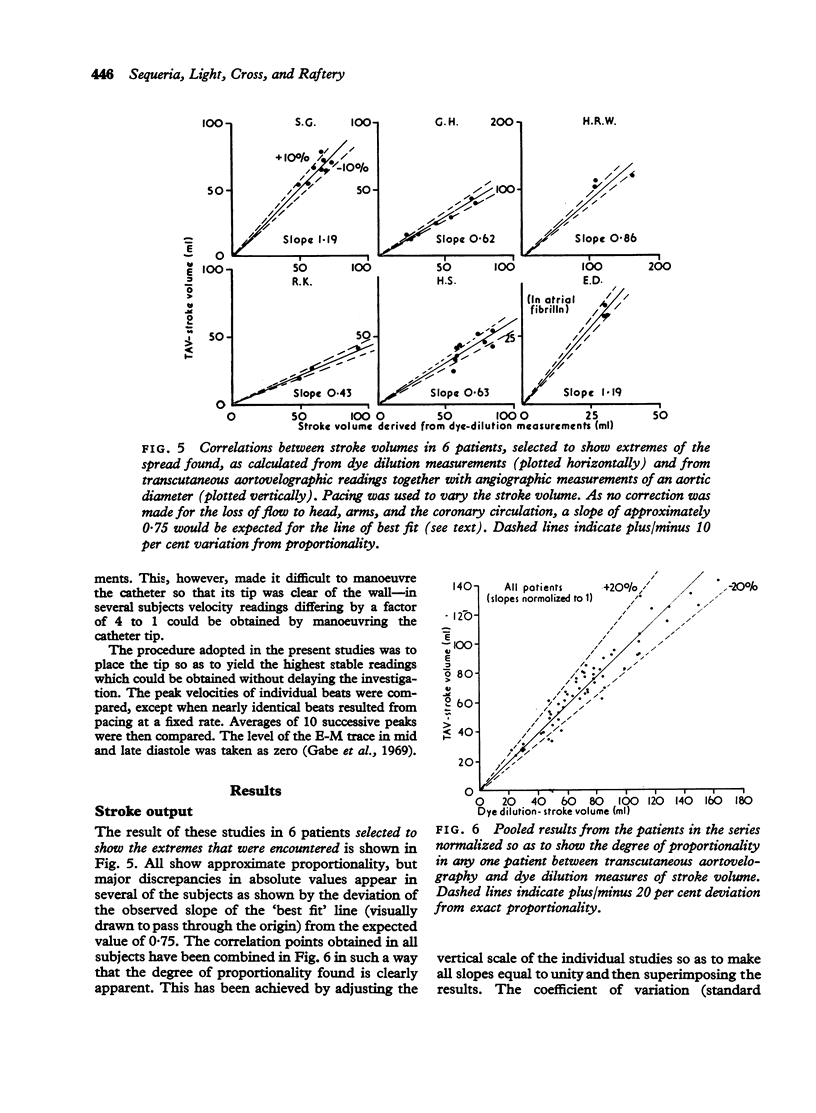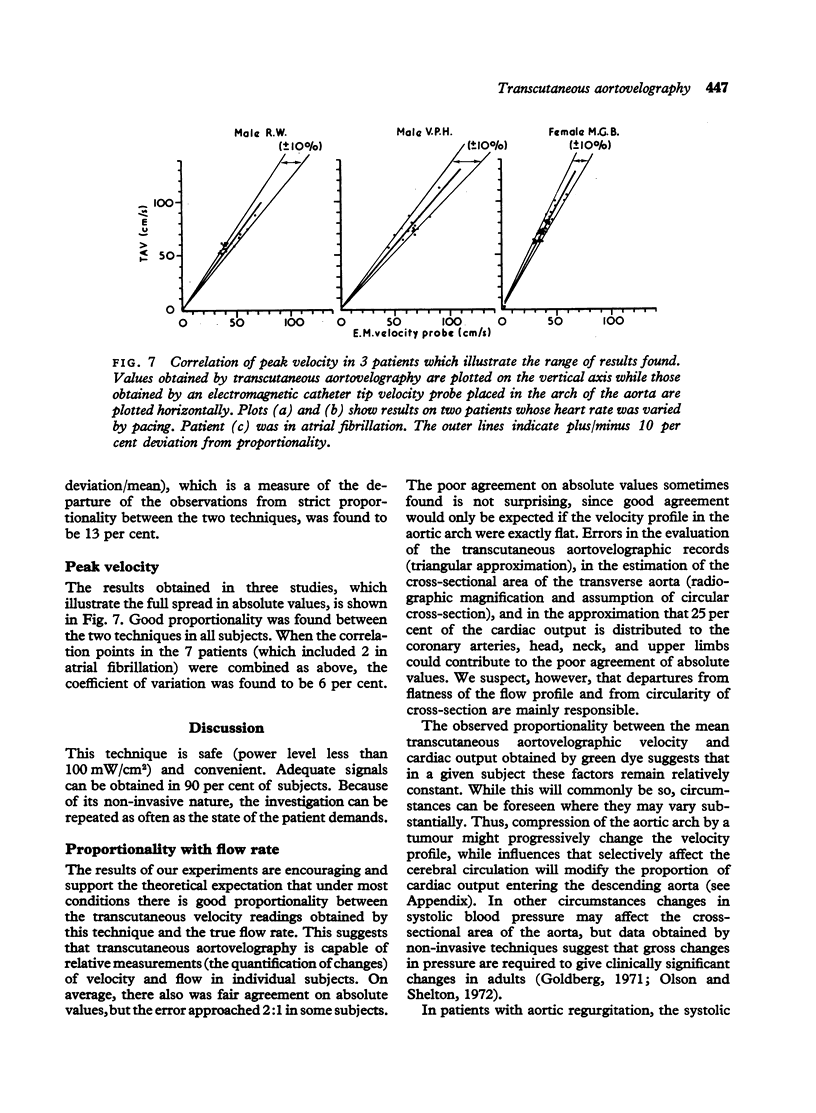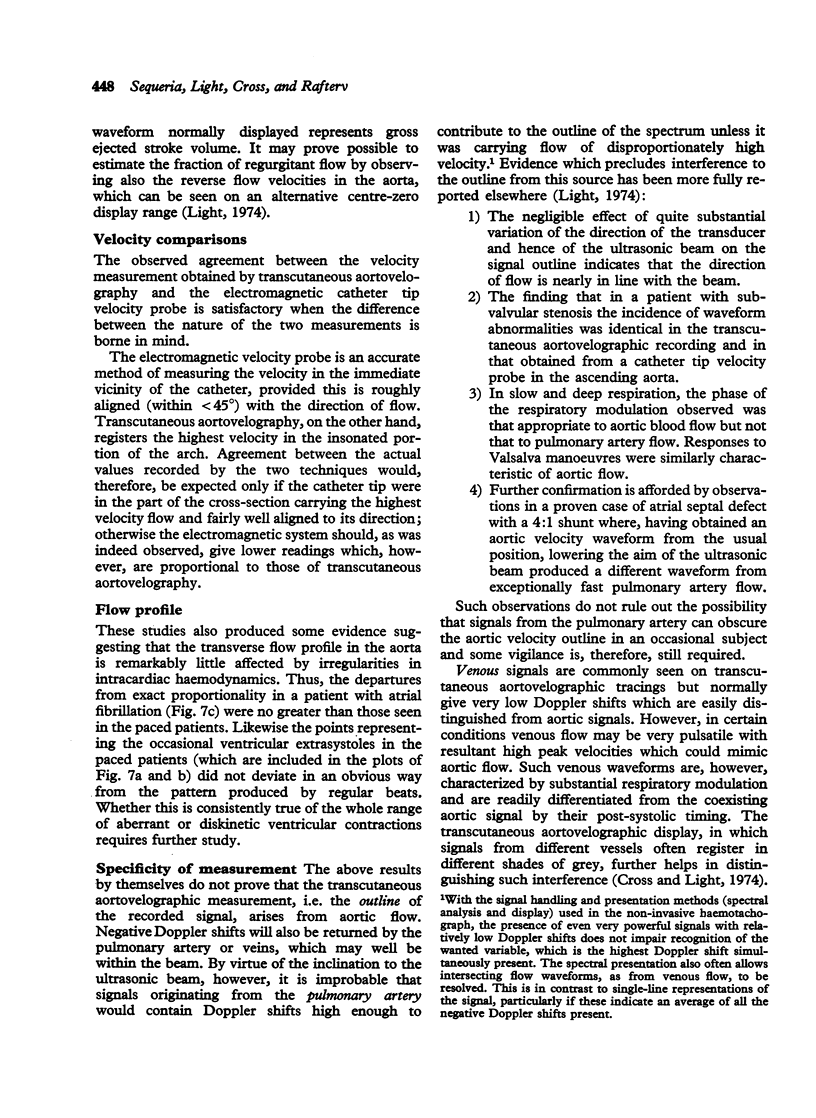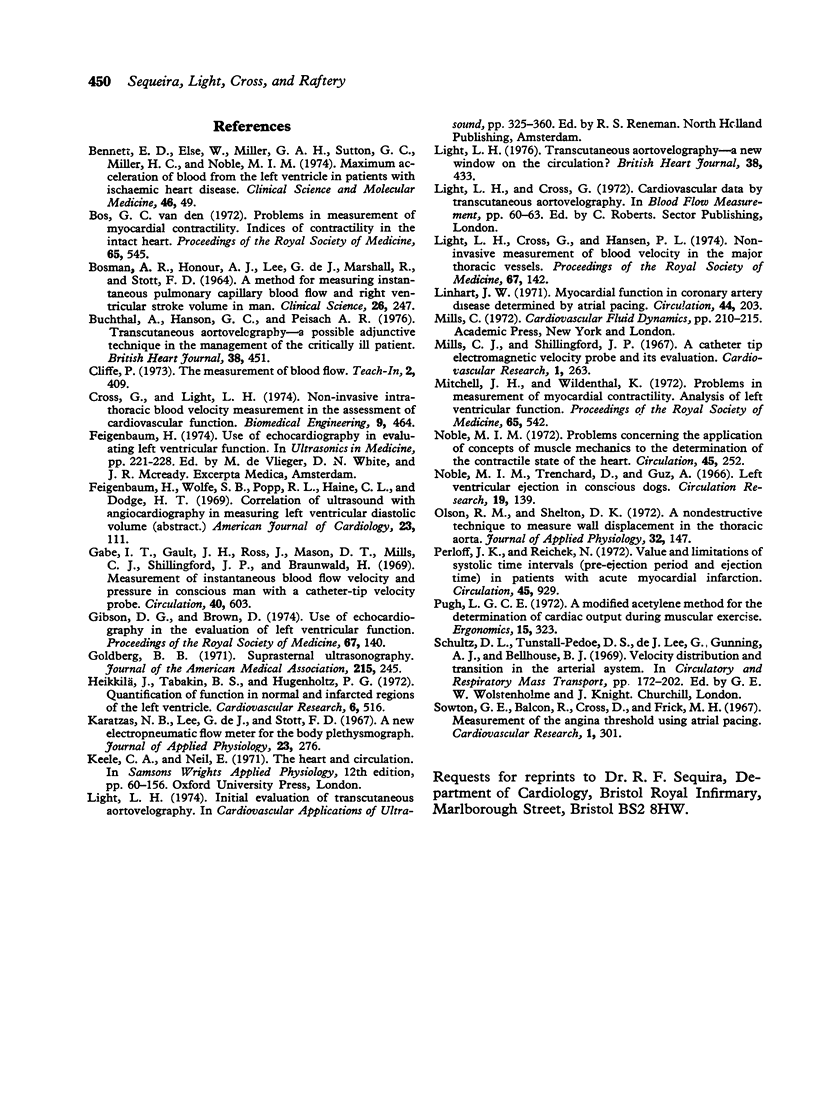Abstract
The haemotachograph is a non-invasive ultrasonic Doppler-shift instrument designed to measure the velocity of blood in the arch of the aorta by a technique referred to as transcutaneous aortovelography. Its accuracy has been assessed at cardiac catheterization in 20 patients. When transcutaneous aortovelographic values were compared with stroke volume determined by standard invasive techniques, a good proportional agreement was found. The accuracy of absolute flow values, as calculated from transcutaneous aortovelography and dimensional data, was, however, poor. Peak velocity determined from transcutaneous aortovelographic tracings agreed well with values obtained with a catheter tip electromagnetic velocity probe. Transcutaneous aortovelography is a useful non-invasive technique which can be used to determine phasic blood flow velocity in the aortic arch and to follow changes in cardiac output over a period of time.
Full text
PDF